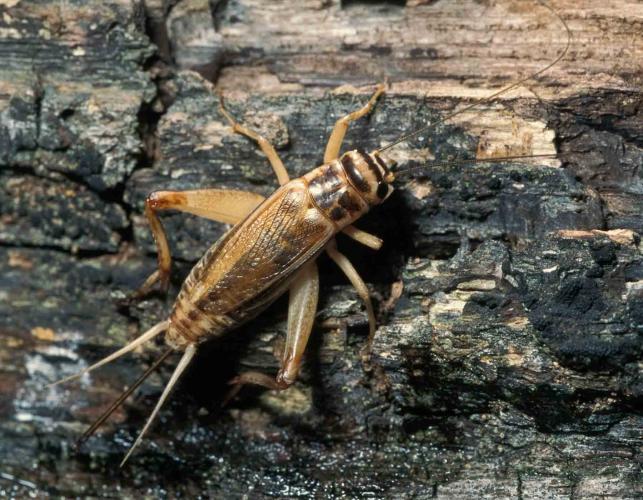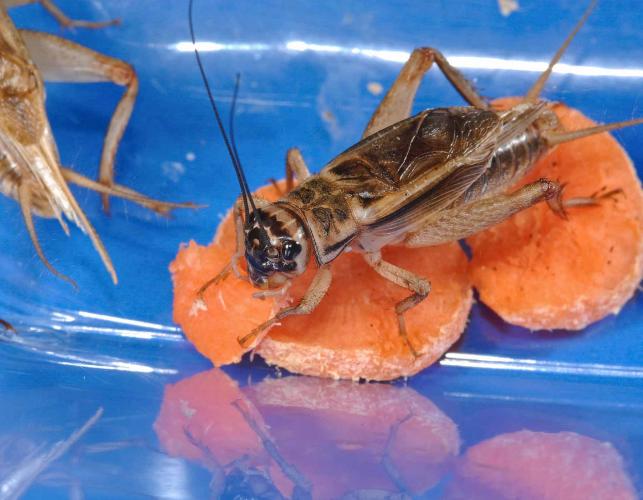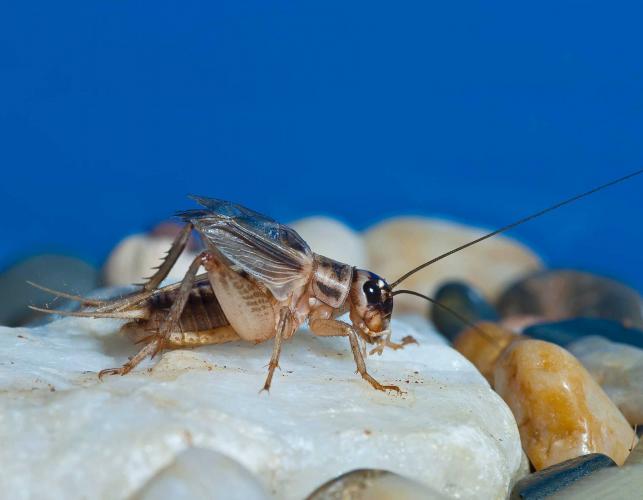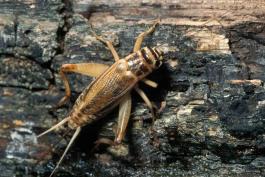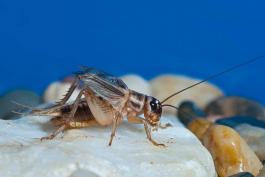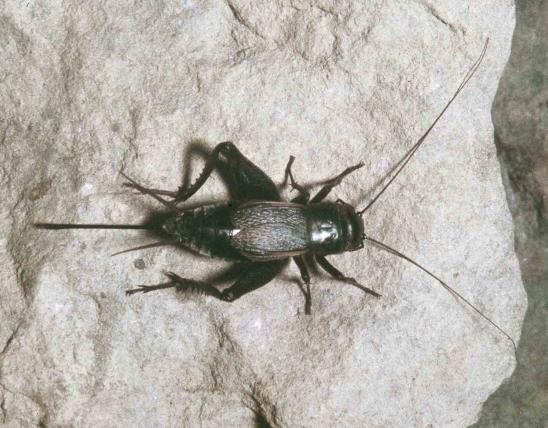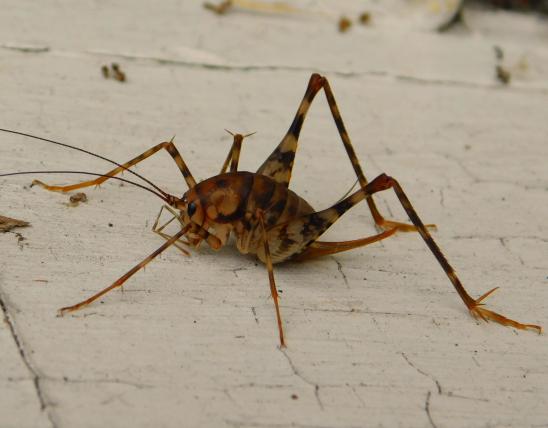
The house cricket is light brown or tannish overall; the tan head has three dark crossbands. Females have a harmless needlelike ovipositor at the tip of the abdomen. Like other types of field crickets, house crickets have large heads, hind legs adapted for jumping, and stout, unmovable spines on the hind legs.
Learn more about house crickets and other field crickets in their group entry.
Habitat and Conservation
Like other types of field crickets, house crickets are common in many habitats, especially grassy areas such as lawns, fields, pastures, prairies, roadsides, but also in woods. House crickets are also quite common in houses.
House crickets are probably native to Eurasia but are found nearly worldwide, having traveled the globe with people. They are commonly sold for fish bait and as a live pet food. They eat a wide variety of foods and can be kept as pets.
